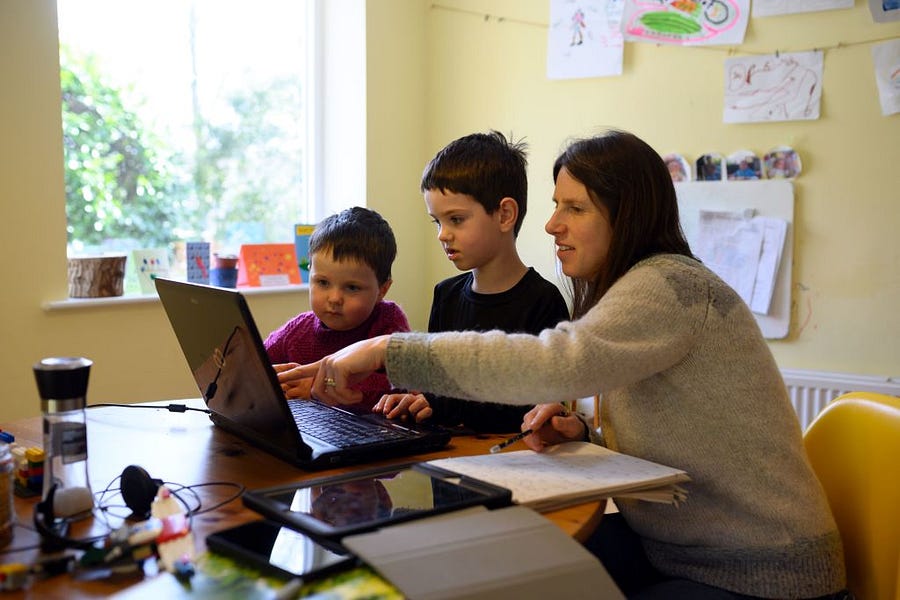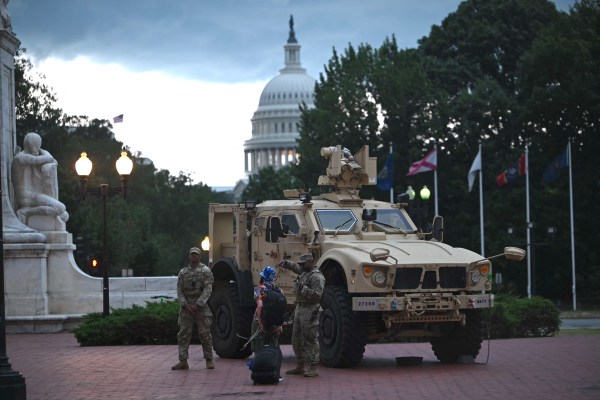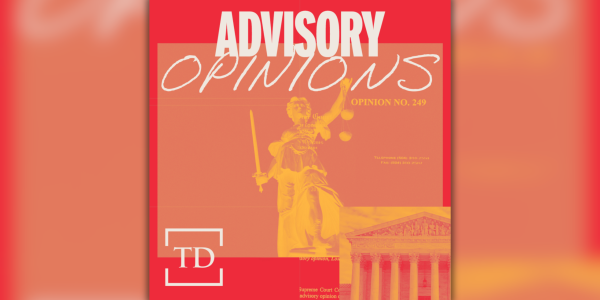The pandemic is exposing barriers to equal opportunity that remain in American life. Access to affordable and high-quality childcare and schooling options is near the top of the list.
Considerable coverage has been devoted to the effect on the pandemic on children, particularly those from low-income families being left behind by virtual schooling. But we have a statistic that illustrates the problem from another point of view: American women are leaving the labor market much more frequently than men during the pandemic. The Department of Labor’s September jobs report showed that the number of American women older than 20 in the labor force dropped by 956,000 since August, compared with a decline of 307,000 among men. According to the Federal Reserve Bank of St. Louis, the workforce participation rate among American women in 2020 has fallen to levels not seen since the 1980s.
Many factors are changing Americans’ employment opportunities: economic shutdowns, reduced demand for some professions, and more. But caring for children is posing a specific challenge to working parents, particularly women who are often primary caregivers. The Census Bureau recently reported that 25 percent of parents (ages 25 to 44) were not working because of childcare challenges caused by the pandemic. Women were nearly three times more likely than men to be out of work to provide childcare.
In the short term, this new childcare burden highlights why American schools should reopen, particularly given the promising public health evidence that it is safe to do so. Looking beyond the pandemic, reforming public childcare programs to yield greater value for working parents should be a bipartisan priority to improve economic opportunity.
The economic and educational cost of pandemic school closures.
Weeks into fall, many schools and childcare centers across the United States remain closed. The Center for Reinventing Public Education at the University of Washington reviewed 477 school district’s reopening plans and found that 26 percent provided only remote instruction as of September 10. School districts serving larger populations of children living in poverty were more likely to begin the year remotely.
At the Foundation for Research on Equal Opportunity (FREOPP), our ongoing review of the nation’s 120 largest school districts shows that more than half continue to provide only remote learning as of early October. These closed school districts serve an estimated 1.5 million children living in poverty. Many of these large school districts have no current timeline to reopen. Several have committed to staying closed through December.
Many childcare centers have also closed. The National Institute of Early Education Research (NIEER) at Rutgers University reports that “nearly three-quarters (74%) of children attending preschool programs had their programs closed as a result of the pandemic,” based on a spring parent survey. Childcare closures have continued in many communities since spring. For example, nearly 4,500 childcare centers have closed in D.C, Maryland, and Virginia, many permanently.
For working parents, school closures and childcare shortages are creating significant challenges. Many are forced to choose between their jobs and providing care for their children, including supporting distance learning. Based on the September jobs reports, many appear to be choosing the latter. Unfortunately, the greatest hardship falls on lower-income families. Not only are they less likely to have the freedom to work from home or reduce their hours, they are less able to pay for creative education or childcare arrangements.
Beyond these direct economic costs, there is growing evidence that pandemic-related school closures are creating significant learning losses for a generation of children with lasting consequences. Stanford University researchers recently estimated the learning losses of students affected by spring school closures. “Across the 19 states,” the researchers found, “the average estimates of how much students lost in the Spring of 2020 ranged from 57 to 183 days of learning in Reading and from 136 to 232 days of learning in Math.”
These findings are consistent with other estimates. For example, Brown University researchers projected that spring closures would cause students to lose a third of a year’s learning in reading and half a year’s learning in math by fall. They warned that these losses would not be universal and, therefore, would grow the achievement gap between high- and low-performing students. McKinsey modeled the effects of school closures on specific student populations and warned that low-income students will fall one year behind if schools remain closed through December.
The likely long-term consequences of these learning losses are staggering. For example, a recent OECD study estimated that school closures will result in a 1.5 percent loss of future GDP or a total economic cost of $15.3 trillion.
The emerging public health evidence for reopening schools.
These educational and economic costs of school closures are tragic, particularly given the growing evidence that they may be unnecessary to protect public health.
In July, FREOPP examined the public health evidence about the risk of COVID-19 to children. Based on international evidence, we argued that the risk to children was sufficiently low to justify reopening, while recommending precautions. “The risks of infection and transmission are low for all school-aged children, but they are especially low for elementary school students,” we wrote. “Schools and policymakers should understand this and recognize the value in reopening schools on time especially for younger children.”
We recommended safely reopening the nation’s schools by following public health guidance while also accommodating families, teachers, and school employees by providing maximum flexibility for those who believe it is unsafe to return to school.
There is now more encouraging evidence that schools can safely reopen based on the experience of school districts that have reopened. For example, a USA Today analysis of Florida’s experience of school districts reopening found that, “the state’s positive case count among kids age 5 to 17 declined through late September after a peak in July.” According to a Brown University project tracking COVID responses at more than 750 U.S. schools that have at least partially reopened, just 0.13 percent of students and 0.25 percent of teachers had a confirmed coronavirus infection during the month of September.
The long-term opportunity to reform childcare programs to benefit working parents.
Reopening American schools is a good first step. But addressing permanent childcare center closures poses a more complicated challenge for policymakers interested in improving the value of public preschool programs.
One promising solution is to reform existing taxpayer-funded preschool programs to give parents more flexibility over how their child’s preschool and childcare dollars are used, particularly as childcare centers are slow to reopen after the pandemic.
The federal government’s largest preschool program offers a poor deal for parents. The United States spends $9 billion annually on Head Start, or more than $10,000 per student enrolled. But Head Start centers are required to provide only 448 hours of care per year, or less than half of the 1,080 hours that most public schools are open. Past evaluations have found that Head Start doesn’t provide lasting educational benefits for participating kids.
Giving parents control of their child’s share of Head Start funding to arrange for private childcare could dramatically increase the number of hours of care provided and improve the program’s educational value. For example, in 37 states, the per-child cost of the Head Start program is more than the average cost of full-time childcare for a 4-year-old. Increasing the hours of childcare provided would allow working parents to boost annual earnings by 20 percent or more. Allowing parents greater choice should also lead to program improvement and positive educational outcomes.
During the pandemic, giving parents control of this funding could increase access to childcare and keep some parents in the labor force. NIEER reports that private preschool and home-based care providers were more likely to remain open during the pandemic than public programs. Expanding the range of eligible providers to include more private centers and home-based care would begin to help expand the supply of childcare for all parents.
Conclusion.
The rising number of American women leaving the workforce underscores why policymakers must compare the potential public health benefits of school closures with the long-term costs and develop better options for continuing life during the pandemic. The solution may be as simple as reopening K-12 schools and giving low-income parents more control of their child’s share of federal preschool funding.
Dan Lips is a visiting fellow with the Foundation for Research on Equal Opportunity.
Photograph by Oli Scarff/AFP/Getty Images.







Please note that we at The Dispatch hold ourselves, our work, and our commenters to a higher standard than other places on the internet. We welcome comments that foster genuine debate or discussion—including comments critical of us or our work—but responses that include ad hominem attacks on fellow Dispatch members or are intended to stoke fear and anger may be moderated.
With your membership, you only have the ability to comment on The Morning Dispatch articles. Consider upgrading to join the conversation everywhere.